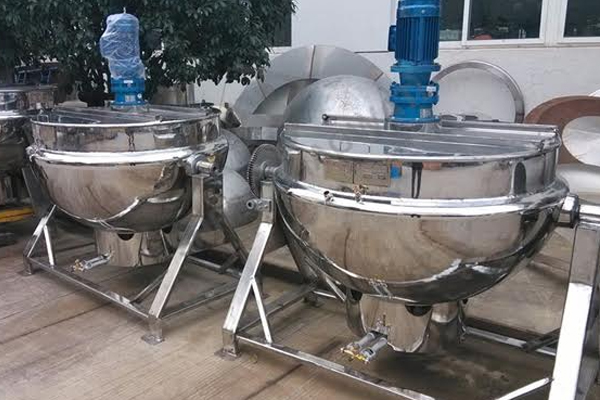MACHINE DESCRIPTION
A starch paste kettle prepares starch-based paste by heating a mixture of starch and water within a jacketed vessel, typically using steam or thermic fluid. The heating process, combined with agitation, facilitates starch gelatinization, resulting in a thick, homogenous paste. The kettle's design, often with a hemispherical shape and a tilting mechanism, aids in uniform heating and easy discharge of the paste.
HEATING AND GELATINIZATION
The kettle's jacket is filled with a heating medium (steam or thermic fluid), which evenly heats the starch and water mixture within the vessel.
As the temperature rises, starch granules absorb water and swell, leading to the disruption of their molecular structure and the formation of a viscous, gelatinized paste.
MIXING AND AGITATION
An anchor-type agitator, or stirrer, is used to continuously mix the paste, preventing lump formation and ensuring a smooth, consistent texture.
The agitator also helps in scraping the paste off the vessel's walls, ensuring thorough mixing and preventing material from sticking.
TEMPERATURE CONTROL
A thermostat is used to control the heating process, allowing for precise temperature adjustments based on the desired paste consistency.
A dial thermometer provides a visual indication of the current temperature.
DISCHARGE
Once the paste reaches the desired consistency, the kettle is typically tilted using a handwheel or a worm gear mechanism.
This tilting action allows for easy discharge of the paste into a collection container placed beneath the kettle.
MATERIAL AND CONSTRUCTION
Starch paste kettles are commonly made of stainless steel (e.g., SS316L) for durability, corrosion resistance, and ease of cleaning.
The hemispherical shape of the kettle allows for more efficient heat distribution and a larger surface area for heating.
